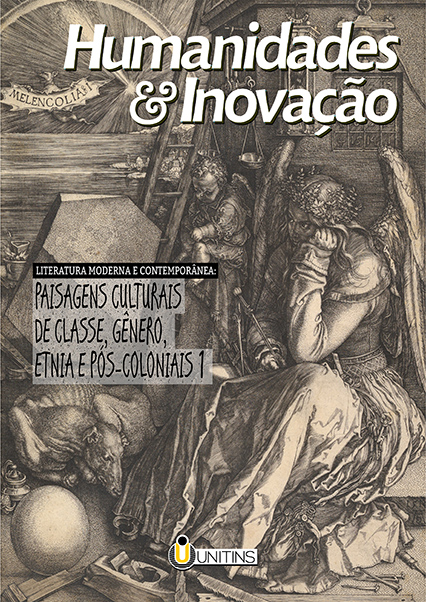GÊNESE E ESTRATÉGIAS DA MÍDIA ABOLICIONISTA ESTADUNIDENSE: DO PANFLETO À NARRATIVA DE ESCRAVOS (1688-1829)
Resumen
O abolicionismo estadunidense foi tudo menos simples: antes de falar de um movimento uno, podemos entendê-lo como um longo debate que se estendeu por 177 anos até que seu objetivo central fosse atingido. Assim, é mais correto falarmos de múltiplas fases do movimento, cada qual com sua filosofia, com sua expectativa perante os negros emancipados e, sobretudo, com uma ideia própria de como alcançar seus alvos. Identificaremos em 1829 uma ruptura entre duas grandes visões de emancipação: uma gradualista e moderada, remontante à época colonial, e outra imediatista e radical. Esse é o momento em que o negro ganha presença na mídia jornalística e literária, contribuindo com argumentos e estratégias de combate antes oclusas à esfera pública os quais, por fim, transformaram o abolicionismo num movimento de massas capaz de alterar os rumos daquele país.
Citas
ADELEKE, Tunde. Afro-Americans and moral suasion: the debate in the 1830's. The Journal of Negro History, Vol. 83, No.2, p. 127-142, Spring, 1998.
APTHEKER, Herbert. "One Continual Cry": David Walker’s Appeal to the Coloured Citizens of the World (1829–1830): Its Setting and Its Meaning. New York: Humanities Press, 1965.
BENEZET, Anthony. A short account of that part of Africa inhabited by the negros, &c (1762). In: BENEZET, Anthony; WESLEY, John. Views of American Slavery taken a Century ago. Philadelphia: L. Johnson & Co, 1858a, p. 51-65.
_________. Caution and warning to Great Britain and her colonies on the calamitous state of the enslaved negroes in the British dominions (1766). In: BENEZET, Anthony; WESLEY, John. Views of American Slavery taken a Century ago. Philadelphia: L. Johnson & Co, 1858b, p. 29-50.
BENEZET, Anthony; WESLEY, John. Views of American Slavery taken a Century ago. Philadelphia: L. Johnson & Co, 1858.
BRADFORD, Sarah H. Harriet: the Moses of her people. New York: Geo. R. Lockwood & Son, 1886.
BUREAU OF LABOR STATISTICS. Inflation Rate, $ 10,000 in 1830 to 2016. Disponível em: < https://www.officialdata.org/1830-dollars-in-2016?amount=10000 >. Acesso em: 6 ago. 2018.
CROCKETT, Hasan. The Incendiary Pamphlet: David Walker’s Appeal in Georgia. Journal of Negro History, Vol. 86, No. 3, p. 305-318, Summer, 2001.
DAVIS, David Brion. Challenging the Boundaries of Slavery. The Nathan I. Huggins Lectures. Cambridge: Harvard University Press, 2003.
DELOMBARD, Jeannine Marie. Slavery on Trial: Law, Abolitionism, and Print Culture. Chapel Hill: The University of North Carolina Press, 2007.
_____________. The Problem of Slavery in the Age of Revolution. Ithaca: Cornell University Press, 1975.
EISENSTARK, Reyna. Abolitionism. New York: Chelsea House, 2010. (Key Concepts in American History).
FIERING, Norman. Moral Philosophy at Seventeenth-Century Harvard: A Discipline in Transition. Chapel Hill: University of North Carolina Press, 1981.
FINSETH, Ian. David Walker, Nature's Nation, and Early African American Separatism. Mississippi Quarterly, Vol. 54, No. 3, p. 337-362, summer, 2001.
GARRISON, William Lloyd. Declaration of Sentiments of the American Anti-Slavery Convention (Philadelphia, December 6th, A. D. 1833). In: Selections from the Writings of W. L. Garrison. Boston: R. F. Wallcut, 1852, p. 66-71.
JACOBS, Harriet Ann. Incidentes na Vida de uma Garota Escrava, escritos por ela mesma. São Paulo: Aetia Editorial, 2018.
JEFFERSON, Thomas. Notes on the State of Virginia. Philadelphia: Prichard and Hall, 1788.
McNAUGHTON, David. “British Moralists of the Eighteenth Century: Shaftesbury, Butler and Price”. In: BROWN, Stuart (Ed.) Routledge History of Philosophy, Volume 5. London & New York: Routledge, 1996. p. 166-185.
McNEESE, Tim. The Abolitionist Movement: Ending Slavery. New York: Chelsea House, 2008.
NEWMAN, Richard S. The Transformation of American Abolitionism: Fighting Slavery in the Early Republic. Chapel Hill: The University of North Carolina Press, 2002.
QUAKER PROTEST AGAINST SLAVERY IN THE NEW WORLD, GERMANTOWN (PA.), 1688. Disponível em: <http://triptych.brynmawr.edu/cdm/compoundobject/collection/HC_QuakSlav/id/11/rec/2>. Acesso em: 26/07/2018.
SAUDER, Gerhard. Empfindsamkeit. Band I: Voraussetzungen und Elemente. Stuttgart: J. B. Metzler, 1974.
STAUFFER, John. Fighting the Devil with his own fire. In: DELBANCO, Andrew. The Abolitionist Imagination. Cambridge / London: Harvard University Press, 2012, p. 57-80.
VIRGINA STATE RECORDS. Transcript of David Walker’s 8 December 1829 letter to Thomas Lewis. Fac-símile disponível em: <http://www.virginiamemory.com/blogs/out_of_the_box/2011/02/09/david-walkers-appeal-anti-slavery-literature-in-the-executive-communications/>. Acesso em: 04.ago.2018.
WALKER, David. Walker's Appeal, in four articles; together with a preamble, to the coloured citizens of the world, but in particular, and very expressly, to those of the United States of America. Third Edition. Boston: s/e, 1830. Disponível em: <https://docsouth.unc.edu/nc/walker/walker.html>. Acesso em: 30.jul.2018.
WILLIAMS, James. The narrative of James Williams, an American slave, who was for several years a driver on a cotton plantation in Alabama. New York: The American Anti-Slavery Society, 1838.
A submissão de originais para este periódico implica na transferência, pelos autores, dos direitos de publicação impressa e digital. Os direitos autorais para os artigos publicados são do autor, com direitos do periódico sobre a primeira publicação. Os autores somente poderão utilizar os mesmos resultados em outras publicações indicando claramente este periódico como o meio da publicação original. Em virtude de sermos um periódico de acesso aberto, permite-se o uso gratuito dos artigos em aplicações educacionais, científicas, não comerciais, desde que citada a fonte (por favor, veja a Licença Creative Commons no rodapé desta página).











